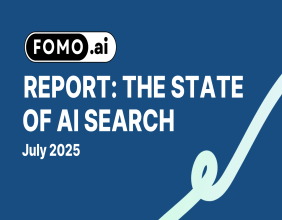GA, UNITED STATES, June 23, 2025 /EINPresswire.com/ -- What if reducing greenhouse gas emissions wasn’t just about upgrading industrial facilities, but about how we use water at home and in cities? A new study has uncovered a surprising link: the way we use water upstream directly affects the emissions of wastewater treatment plants downstream. Researchers found that improving urban water-use efficiency could reduce annual water consumption by 48% and cut greenhouse-gas (GHG) emissions from treatment systems by 1.67 million tons of CO₂-equivalent under ideal scenarios. By leveraging these systemic feedbacks, wastewater facilities could reach carbon neutrality by 2037 in China—seven years earlier than current forecasts relying on technology alone.
Wastewater treatment plants (WWTPs) are unsung contributors to urban carbon footprints, responsible for about 2% of global city GHG emissions. Yet most emissions-reduction strategies focus on internal plant upgrades, which are costly and slow to deploy. Worse, they often target only indirect emissions from energy use, while direct biological emissions remain difficult to address. Missing from this equation is the broader system: the cities and sectors that feed into these plants. Urban water-use behaviors, from agriculture to household consumption, shape the volume and pollutant load of incoming wastewater. Due to these blind spots, there's a growing call to rethink emission strategies beyond the treatment fence—toward the source.
A team of researchers from the Harbin Institute of Technology and the National Joint Research Center for the Yellow River Basin has mapped this overlooked link between urban water use and WWTP emissions. Their findings (DOI: 10.1016/j.ese.2025.100574), published on May 27, 2025, in Environmental Science and Ecotechnology, show how integrating water management with machine learning-based modeling can optimize both water use and emissions control. By modeling feedback loops in real-world data from 205 WWTPs and 95 cities, they created a replicable framework for aligning water-saving behaviors with carbon reduction goals.
Using a hierarchical machine learning model, the team compared the predictive performance of energy consumption in WWTPs with and without upstream urban water-use data. The more comprehensive model revealed a “domino effect”: cities that used water more efficiently sent lower and less contaminated volumes of wastewater to treatment plants—cutting both energy use and emissions. Key predictors included per capita water consumption and water-use efficiency, which outperformed even some treatment-specific indicators in the model.
To quantify the real-world impact, the researchers assessed eco-efficiency across WWTPs in the Yellow River Basin and simulated four water management scenarios. These included agricultural reallocation, water rights trading, and smart pricing for household use. The most comprehensive strategy cut water use nearly in half, raised WWTP eco-efficiency scores from 0.397 to 0.751, and shrank low-performing facilities to just 1.46% of the total. Combined with existing carbon-neutral technologies, this approach could cut basin-wide GHG emissions by over 40% and move up the carbon neutrality timeline by seven years.
“Our findings shift the narrative. Emissions from wastewater treatment aren’t just about pipes and pumps—they’re about patterns of urban life,” said Professor Shih-Hsin Ho, the study’s corresponding author. “If we rethink how water flows through our cities, we can not only conserve a vital resource but dramatically reduce the carbon footprint of water systems. It's a strategy that’s scalable, affordable, and already within reach.”
The implications go far beyond wastewater. For policymakers, urban planners, and environmental managers, this study offers a new roadmap for climate action—one that connects households, industries, and farms to the emissions outcomes of infrastructure. Particularly in water-stressed regions like northern China, the framework shows how integrating water efficiency and carbon planning can yield immediate gains. The results also emphasize the value of data-driven policy: pairing smart meters, AI tools, and regional water rights reform could transform not only emissions but also resource equity. In the race toward net-zero, smart water use may be one of the most overlooked climate solutions yet.
DOI
10.1016/j.ese.2025.100574
Original Source URL
https://doi.org/10.1016/j.ese.2025.100574
Funding information
This work was financially supported by the following funding: Joint Research Program for Ecological Conservation and High Quality Development of the Yellow River Basin (2022-YRUC-01-0204).
Lucy Wang
BioDesign Research
email us here
Legal Disclaimer:
EIN Presswire provides this news content "as is" without warranty of any kind. We do not accept any responsibility or liability for the accuracy, content, images, videos, licenses, completeness, legality, or reliability of the information contained in this article. If you have any complaints or copyright issues related to this article, kindly contact the author above.
![]()




